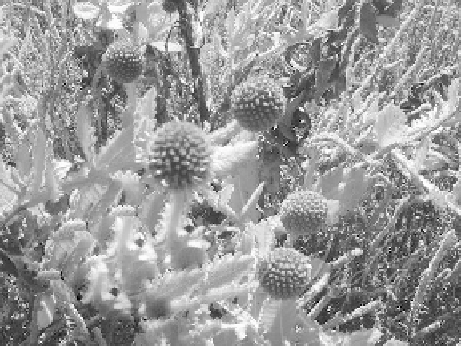Environmental Engineering Reference
In-Depth Information
SPHAERANTHUS INDICUS
LINNAEUS
Phylum: Magnoliophyta
Class: Magnoliopsida
Order: Asterales
Family: Asteraceae
Common name: East Indian globe thistle
Distribution: India, Sri Lanka, Africa, Australia
Habitat: Marshes, rice ields, swamps
Description: It is a much branched and strongly scented annual species. The
stem is with wings that are toothed. Leaves are ovate-oblong, narrowed at the
base, dentate, and serrate. Flowers are in compound heads that are globose.
Compounds and activities: The aerial parts of this species showed bioactive com-
pounds such as 5-hydroxy-7-methoxy-6-C-glycosyllavone, n-pentacosan,
hentriacontane, n-triacontanol, β-sitosterol, stigmasterol, β′-D-glucoside of
β-sitosterol, sphaeranthine, and a phenolic glucoside. The pharmacologic
properties of this species include antioxidant, anxiolytic, analgesic, anti-
pyretic, antihyperlipidemic, antimicrobial, hepatoprotective, immunomod-
ulating, wound healing, psychotropic, bronchodilatory, antimacroilaricidal,
antiallergic, and antidiabetic. The free radical scavenging potential of the
ethanolic extract of this species has been determined by
in vitro
models
like ABTS, DPPH, superoxide dismutase, and nitric oxide radical activity.
The calculated 50% inhibitory dose (ID
50
) values were found to be 41.99,
33.27, 25.14, and 22.36%, respectively (Shirwalkar et al., 2006).

